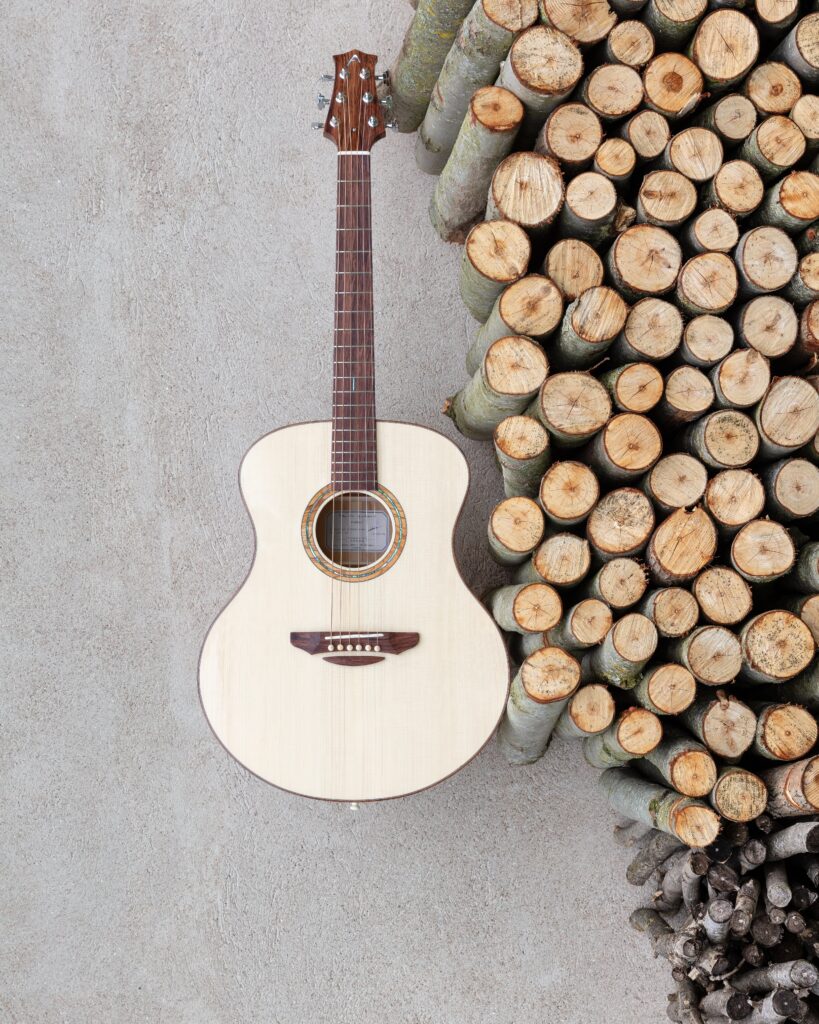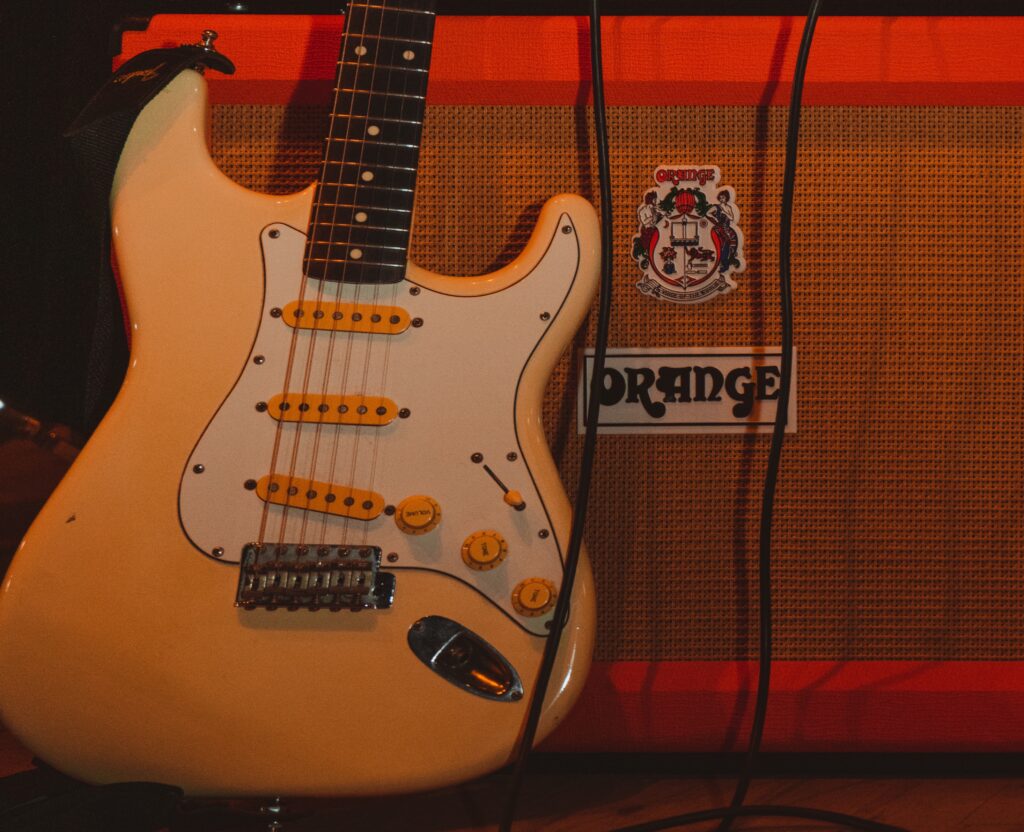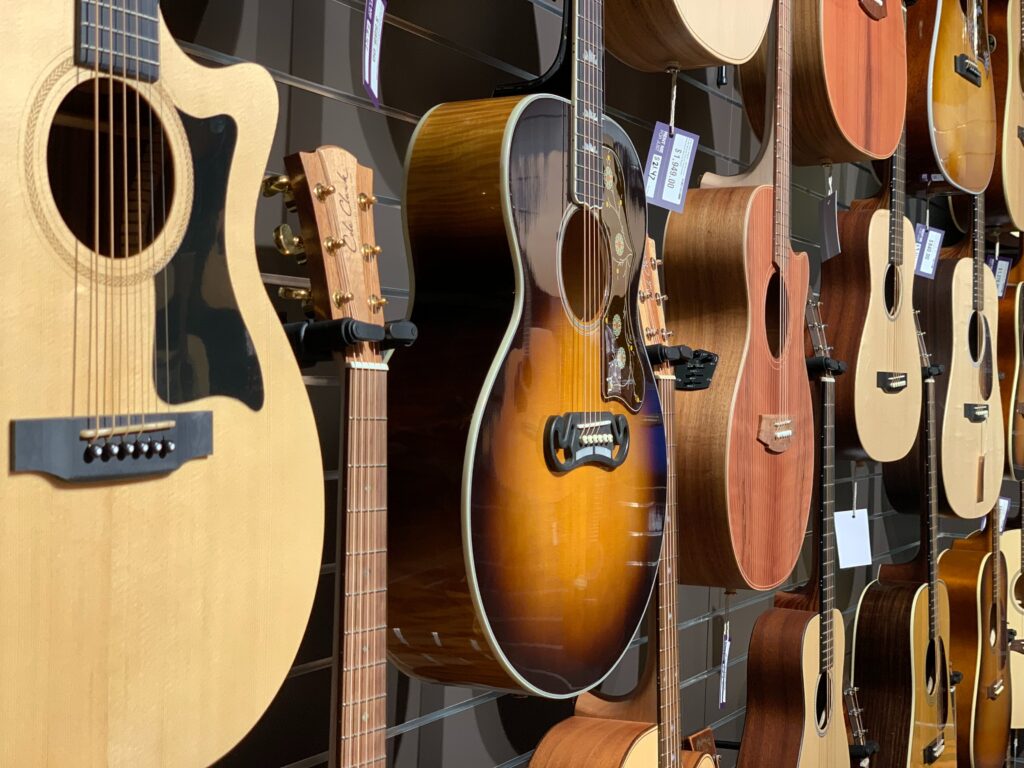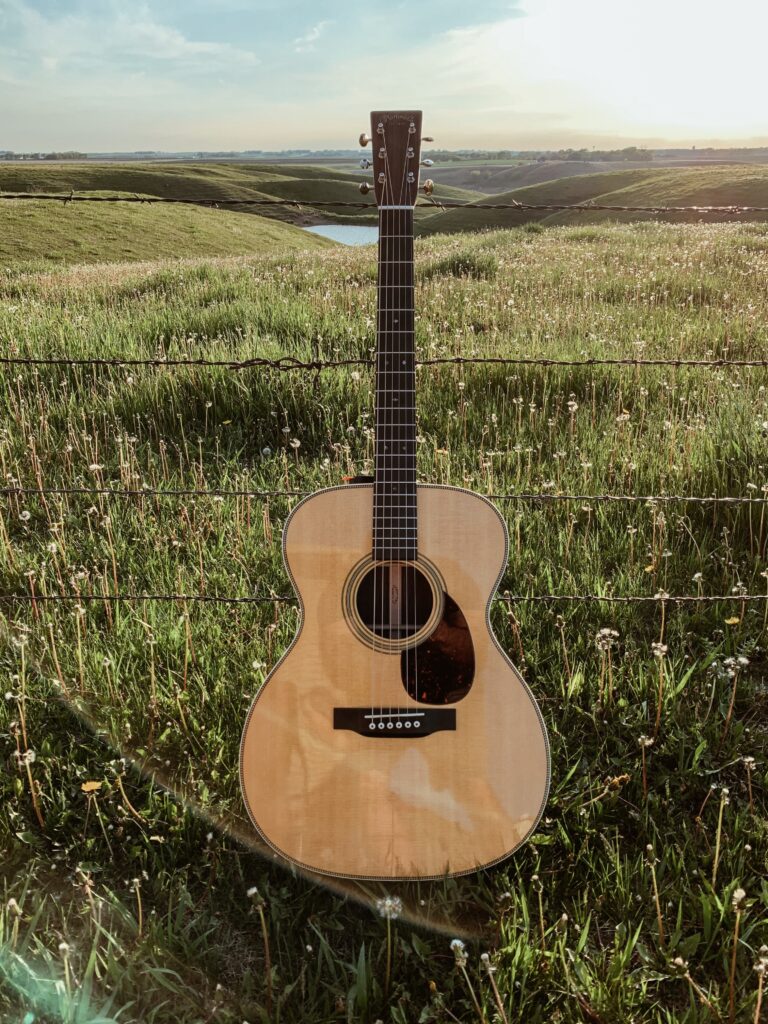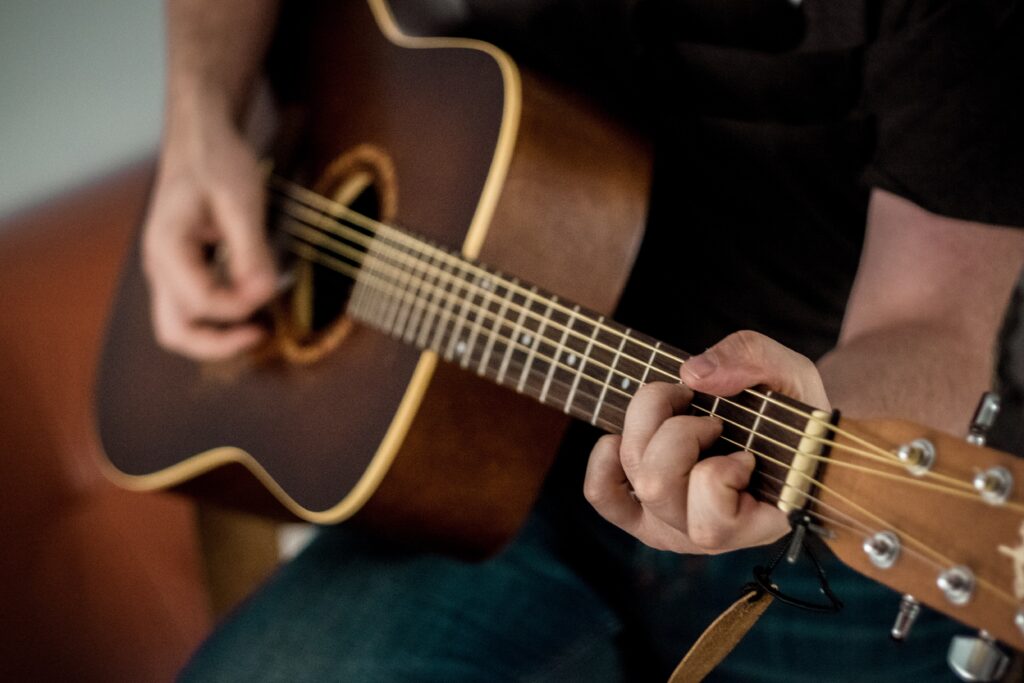- Tonal Woods & What is the Difference?by topazguitarrepair
What are the Different Types of Tonal Woods Used in Guitars?
Most guitars are made from wood, and there’s a wide variety of woods that are used to make both electric and acoustic guitars. You may think these different woods are used mainly for aesthetic reasons — different woods have different looks. But there’s another reason besides looks for using one type of wood over another.The wood used to make a guitar affects its tone. Different woods used for different parts of the guitar, like the body, neck and fingerboard, can give your guitar a distinct sound. With its effect on tone, taking the type of tonal wood used into consideration when buying a new guitar or bass is important.
Different Woods Give Different Tones
Every guitar or bass will sound a little different even if they look the same. This can come down to how someone plays, but the tonal wood used to make the guitar is also a factor.Depending on the type of wood and which part of the guitar it was used to make, the material has a big effect on the instrument’s tone. Not all woods are suitable for all guitars, so finding one with a sound that you like is key.The types of wood used to make guitars are called “tonewoods.” Many of these tonewoods give their instrument a distinct sound. We’ve outlined some of the more common and less common types of tonewoods below to help you pick an instrument with a sound that you’ll love.
Common Woods
There are some standard woods that are more common in guitars. Here are the more common tonewoods used to make guitars:
- Alder: Alder is a little less common compared to these woods, but it’s a favorite tonewood of Fender. It’s a light wood that gives your playing a warm tone. It also gives a bit more of an emphasis on higher tones.
- Ash: You can get a lot of variance in tone even with this one type of wood. A harder ash wood will give you a lot of a bite, like mahogany. Or, a more lightweight swamp ash will have a warmer tone with great upper and mid ranges.
- Basswood: A softer wood, basswood makes a great jack-of-all-tones type of guitar. It doesn’t have one main tonal quality — it has many. It has a bit of bite, a bit of a growly sound, and a little sweetness. With this range in tone, basswood is the tonewood for you if you like to really customize your sound.
- Mahogany: Mahogany is a common tonewood to use for the body of the guitar. It gives a pleasant, warm tone with a greater emphasis on the lower end.
- Maple: Maple is a hard, dense wood that is usually used for the neck of the guitar, but can also be used for the top of the body and fingerboards. Some tonewoods will give your sound a smooth tone, but not maple — if you like a bit of a bite in your sound, maple is a great pick.
- Rosewood: A Rosewood construction can either fall under the category of Brazilian Rosewood or Indian Rosewood. This wood provides a bit of clarity to the low end and mid range due to this wood’s dense nature and tonality. Typically used for backs and sides of acoustic and electric guitars, the wood is able to provide a warm and resonant sound that some consider the best kind of wood or “holy grail” for guitar construction.
When you’re looking for a new guitar, you can’t go wrong with any of these common tonewoods. But if you’re a little pickier about the type of tone you want, paying attention to the tonewood will help you find the perfect guitar to match your playing style and tastes.
Less Common Woods
These woods are more exotic, making them typically more expensive and less common. But like the more common tonewoods, they each have a unique sound:
- Bubinga: Bubinga is a tropical wood that is a bit similar to maple and rosewood. However, it has a brighter tone than rosewood and less of an emphasis on the high- and mid-range tones.
- Koa: Koa is a tonewood that comes from Hawaii and is usually used for the tops of guitar bodies. It’s often paired with mahogany. Koa gives the most emphasis on the higher range and some in the midrange.
- Padouk: This tonewood is not very common and is not as popular. It can create a lot of unique tones depending on where it’s used on the guitar, but a major downside is its weight. It’s pretty heavy compared to other tonewoods.
For a more unique sound, one of these exotic tonewoods could be what you’re looking for.
- What is a “Setup”?by topazguitarrepair
What is a Guitar Setup and When do I Need One?
Chances are good you’ve heard “guitar setup” since you began playing guitar. It’s frequently thrown around as common knowledge, but do you really know what a guitar setup is and why it’s important?If you know don’t know what a setup is, we’re here to help! We’ve put together a basic explanation of what a guitar setup is and when you may need to get one.
What is a Guitar Setup?
When you hear “guitar setup,” what comes to mind? Is it the way you physically set up your instrument when you’re ready to play? That would make sense, but that’s not what it is.To put it basically, a guitar setup is providing your guitar with maintenance. Like your annual doctor’s visit or scheduled maintenance for your car, your guitar needs maintenance too to keep it in the best shape possible.You can do your guitar setup yourself or have it done by a professional. However, you should only do your setup yourself if you have experience doing it or know someone who knows what they’re doing. Doing a guitar setup incorrectly could permanently affect your guitar in a negative way.When you have a guitar setup done, you’re making a series of adjustments to get it sounding the best that it can. Getting a setup makes your guitar play the right tones at the right places, handles at its best and reduces buzz.
Why Does Your Guitar Need One?
Most guitars are made of wood. This material gives your guitar that great sound you love, but it also changes as the temperature and humidity change. Day to day, this alters the way your guitar sounds. This change in sound is because of the changes in temperature and humidity causing the guitar to expand and contract.The change in your guitar isn’t noticeable to the eye, but it’s definitely noticeable in its sound. That’s why your guitar setup is so important — the setup counters these changes to get your guitar sounding its best and to keep it in the best shape for as long as possible.When you get a guitar setup, the following work may be done:
- An evaluation of how the guitar plays and how clean it sounds
- Adjusting the neck, tightening or loosening the truss rod
- Removing the strings and replacing them if needed
- Cleaning the nut so the strings sit how they’re supposed to
- Get the right intonation by adjusting the scale lengths of the strings
- Fine-tune the bridge’s height
A professional can give you a detailed rundown of how much work needs to be done and exactly which adjustments need to be made on your guitar.
When Should You Get a Setup?
There are a number of indicators to look out for that show you may need a setup for your guitar.If you recently purchased your guitar, you probably need a setup. Guitar manufacturers will do generic quality testing before a guitar goes out, but they likely won’t be closely tested. A setup will help fine-tune your new guitar. The same principle applies if your guitar has been unplayed for a while.If your guitar feels difficult to play, it might not be you. A setup will help give your guitar the adjustments it needs to best fit your playing style and needs. A factory-standard guitar won’t fit everyone perfectly — the setup can help customize your guitar for you.Do you feel like your guitar always seems out of tune, even after you’ve tuned it? If so, a setup will get your guitar back in pitch.If you’re hearing your guitar buzz a lot while you’re playing, you’ll need a setup. But if you’re just learning to play, it may not mean you need a setup. Beginners will hear this buzzing a lot until they improve their skills. If you continue to hear a lot of buzzing, you should get a setup.Even if you’re not experiencing any of these issues, you should get a guitar setup every six months or so, depending on how often you’re playing, to keep your instrument in the best shape possible.If you’re looking for a professional who you can trust to give your guitar a setup, we’ve got you covered. Fill out the contact form now and we’ll get you setup!
- Active vs Passive Pickupsby topazguitarrepair
What’s the Difference Between Active and Passive Pickups?
The pickup on your electric guitar or bass affects the tone. Whether you have a passive or active pickup, each type will give a different sound to your music. Below, we’ll explain what exactly the pickup is, the difference between passive and active pickups, and which type you should use.
What is a Pickup?
The pickup is the piece of metal or plastic that sits below the strings on the body of your guitar or bass. It “picks up” the vibrations coming from the strings and translates those vibrations to the sound you hear coming out of your amp.The pickup is made of a magnet and wound copper wire. When you strum the strings of the guitar or bass, it disrupts the magnet and alters the current that is running through the copper wire. That current then moves through the amplifier, giving you your sound.
Active vs Passive
There are several differences between the two types of pickups.Passive pickups are how we described them above. They have two basic components — the magnet and would copper wire — which pick up the vibrations of the strings. The vibrations are read as a current, which then travels through your cable and then out of your amplifier.Passive pickups create a weaker electric signal than active pickups, making your amplifier more important. The amp is where your sound is boosted, giving it much better projection.Active pickups have a higher output than passive pickups because they rely on a power source, like a battery. Basically, active pickups will give your sound more power and give you a more consistent tone than a passive pickup.
Which is Better?
Objectively, neither type of pickup is better than the other. Each type of pickup comes with its own set of advantages and disadvantages. The advantages of a passive pickup include:
- Making your tone more expressive because the pickup is more sensitive to the vibrations of the strings
- Ability to pick up more subtle tones, giving your music a greater range
- More affordable than guitars and basses with active pickups
Some disadvantages of passive pickups are:
- They have a more limited output
- If you have a slightly lower-quality guitar, it could have more of an effect on your sound than an active pickup
- Produce a lot more feedback out of the amplifier, which can interfere with the sound and tone of your guitar or bass
If you’re a beginner, you may not want to spend the extra money needed to get an active pickup. However, you can upgrade your passive pickup to an active pickup. If you like playing around with the subtleties of your music, the passive pickup would also be the better choice.The quality of your amp is also important in getting the most out of your passive pickup, since this type relies more heavily on this piece of equipment.The advantages of an active pickup include:
- Have less feedback than passive pickups, giving your music a cleaner sound
- Easier to handle with high-gain distortions
- Better tone than passive pickups with a lower-quality guitar or bass
Some of the disadvantages of the active pickup are:
- Guitars with active pickups are more expensive than guitars with passive pickups
- If your battery runs out, the instrument is basically useless until you replace the battery
Active pickups are more popular with bass players and guitarists who mainly play metal. For bassists, the active pickup gives the instrument a brighter tone that fits better with the style of their playing. The power you get with an active pickup is better suited to the energy of the metal genre of music.With their cleaner tones, active pickups are also better suited for studio recording. If you used a passive pickup instead, you’d have a lot more excess noise to work through while mixing the track.The type of pickup you choose will come down to the genre of music you typically play in, your playing style and your own preference. Test out both types of pickups, decide on the type you think sounds best, and then just go with that one.
- Parts of an Acoustic Guitarby topazguitarrepair
A Closer Look at the Acoustic Guitar
No matter what instrument you play, understanding how it was made and how it works is important. This knowledge will help you troubleshoot any issues you have and help you get the best sound possible out of your instrument.We’re going to break down the different components of your acoustic guitar and the types of materials used to make this versatile instrument.
Parts of the Acoustic Guitar
Whether they’re manufactured or built by hand, acoustic guitars need to be made with a lot of care. Each of these components of an acoustic guitar is important in its own way and has unique attributes:
- Top: The top of the guitar has a few components too, with the main part being the soundboard. To get the best sound, the soundboard has to be light but strong and both rigid and flexible. This sounds like it should be impossible — how can one piece have each of those characteristics at once? It is possible, and it’s key.
- Back: After you strum a note or a chord on your guitar, the sound will bounce around the inside of the guitar. The back of the guitar helps project that sound back out and towards the listener. The piece of wood used for the back of the guitar will be thicker than the one used for the top. This helps give you more volume and greater projection.
- Sides: Like all the parts of the acoustic guitar, the sides are made to help get the best sound. The sides should be thicker and more inflexible to make sure they do not absorb the vibrations from the strings. This allows the sound to go where it should: back out of the guitar.
- Inside: The inside of the acoustic guitar has a lot of pieces that keep the guitar together. The neck block helps keep the neck secure to the body, the end block keeps the bottom of the guitar from splitting and a protective lining reinforces the sides of the guitar.
- Neck: The neck of the guitar helps carry the vibrations from the strings down to the body of the guitar. Similarly to the sides, the neck needs to be thick and stiff to make sure it doesn’t absorb those vibrations.
Beyond how these components are constructed, the materials used for the pieces of an acoustic guitar are equally important.
Tone Woods
A less-well-known part of an acoustic guitar is the type of material used to make it. Most guitars, in general, are made using wood. Especially for acoustic guitars, this gives them their signature appearance.The woods used to make guitars are commonly called “tonewoods.” Each type of wood, and which part of the guitar it is used to make, affects the tone of an acoustic guitar. If you’re looking for a guitar with a particular tone or an emphasis on different ranges, make sure you look at the tonewoods that were used.Below are some of the popular types of wood used to make acoustic guitars:
- Spruce: As the most common tonewood for tops, spruce’s clean, resonating qualities are enjoyed by many users. This tonewood will give the same crisp sound no matter how it’s played, giving it a great deal of versatility.
- Cedar: Cedar is known for its dark, quieter tone. It tends to lose some clarity when played hard with a pick, making it a top choice for fingerstyle players looking for a sound with strong overtones.
- Mahogany: Mahogany gives a clean sound from the bass to the treble when it comes to range. But it’s also great at giving a bit more emphasis on your lower tones. This tonewood is usually used for an acoustic guitar’s body.
- Koa: If you want a blend of the two types of tone from maple and mahogany, koa is a great tonewood. This type of wood is typically found on the backs and sides of an acoustic guitar and is sought for aesthetics as often as for tone.
- Rosewood: Brazilian rosewood has become a protected type of wood and is more difficult to find, making guitars made from this tonewood much more expensive and difficult to find. However, it creates a warm, rich sound and gives a beautiful look.
- Acoustic Guitar Beginner Tipsby topazguitarrepair
The guitar is a versatile and fun instrument to learn how to play. A lot of people who decide that they want to learn how to play the guitar choose the acoustic guitar as a starter. The acoustic is great to practice with, doesn’t require a lot of extra equipment or accessories.If you’re thinking about buying your first guitar, putting in the time to research your options and ask questions will help you find the right guitar for you.Here are a few pointers to get you started out while you’re getting ready to buy your starter acoustic guitar.
Acoustic Guitar Basics
When you begin learning to play the acoustic guitar, you’ll need to begin building up a lot of different skills. Like learning anything new, there’s a learning curve at the beginning.Here are just a few skills that you’ll need to begin developing:
- How to hold your guitar properly
- Learning the order of the strings
- How to tune your guitar correctly
- Learning correct finger placements
- Reading chord diagrams
- How to play a few simple chords
Along with these skills, you should also have a basic understanding of your guitar. It’s important to be able to recognize if something isn’t quite right. That way, you will avoid potentially damaging your instrument by fixing it as soon as possible.The acoustic guitar has a few main components: the headstock, neck, body and bridge. The headstock is where the tuners are, the neck of the guitar has the frets, the body is the main part, and the bridge is the piece near the opening of the sound hole.
Finding the Right Acoustic Beginner Guitar
When you’re ready to buy a new acoustic guitar, you’re making an investment. You can certainly find a good deal on a guitar, but you want to ensure you’re picking the right one.Here are a few things to look for while shopping for your new acoustic guitar:
- Size: While you’re shopping for your guitar, try testing them out to see if you can comfortably handle the instrument before you buy it.
- Brand: While big names in guitars make quality instruments, don’t count out guitars made by brands you haven’t heard of yet.
- Strings: Different types of strings will give your instrument different tones. While you’re learning, you may want to consider getting a guitar with lighter strings, or even nylon strings, while you’re learning.
- Extras: There are a few other things that will make learning your new guitar a lot easier. Picking up a beginner’s book, a tuner, some extra strings, and an assortment of picks really help a lot in the beginning.
- Finding the Right Pick for Youby topazguitarrepair
Finding the Perfect Pick
A pick may be the smallest part of your guitar rig, but as the most direct connection between you and your instrument, its importance easily outweighs its diminutive size. In this post, we provide a brief overview of the differences between guitar picks and offer some arguments for rethinking the role they play in your setup.
Shapes and Sizes
Most picks come in some variation of the standard triangle/teardrop shape, with varying degrees of edge sharpness and in some cases, a tapering effect in the end. Shape may be the most personal decision when choosing a pick — try out different options and select the one that feels most comfortable in your fingers.Picks range in thickness from extra light (under 0.40 mm) to extra heavy (1.22 mm and above). Lighter picks are better for strumming, whereas thicker picks offer greater precision and control. If you’re new to guitar, try starting with a medium-gauge pick and, if your needs change, adjust from there.
Materials
For the sake of this post, we’re going to limit our discussion of pick materials to the synthetic plastics that account for the vast majority of commercially available products, including:
- Celluloid: Celluloid/cellulose picks have a smooth feel and a balanced tone, perfect for everything from casual strumming to playing complicated leads.
- Tortex: As the name implies, Tortex aims to replicate the feel of a tortoiseshell pick. Though that comparison may be lost to all but a few players today, the result is a pick that grips well, with a crisp, consistent tone.
- Nylon: Nylon picks are more flexible than plastic and produce a brighter tone. Most feature a textured surface for added grip.
Picks for Bass Players
There’s a persistent myth that bass players don’t use picks. The reality, however, is that picks have a definite place in the world of the low end — in fact, a versatile, well-rounded bass player will be able to switch between picked and fingerstyle playing with ease as the song demands.As for which pick is best for bass, that’s a matter of preference — many bass players find that a larger, harder pick is better suited to the fat strings of their instrument, though a standard thin guitar pick will still give you the sharp attack and defined tone that characterizes picked playing.
Picking Your Pick
If you’ve found the pick that works best for you, it’s a great idea to stock up. As any musician knows, picks tend to go missing as they move between the rehearsal space, the studio, the stage and the pocket. Always make sure you keep extra on hand — and keep a few in different places, including your gig bag, your wallet, the back of your amp and anywhere else that’s convenient.As your musicianship evolves, your taste in picks will likely change with it. Don’t be afraid to experiment! You’d be surprised how big a difference something as simple as a new pick can make. Consider switching your pick of choice for something of a different thickness, size or even color. It might be just the thing you need to regain your enthusiasm for your instrument.
- Is it too Late to Learn Guitar?by topazguitarrepair
Learning a new skill can be a little bit intimidating. With any new activity or hobby, you’ll have to get past a learning curve. But, learning a new skill or hobby gives you a fun way to spend your time and get creative.The guitar is one of the most popular instruments to learn, second only to the piano. If you really want to learn to play the guitar, you should go for it! Some people have ideas that may be holding them back though, like their age.
Am I Too Old to Learn Guitar?
If you’re wondering if you can learn guitar at any age, the answer is simple — yes! You’re never too old to learn to play the guitar. Some teachers have students broad age ranges, from children as young as four or five to seniors.In fact, there are lots of benefits to learning the guitar when you’re older, such as having:
- More Time: When you’re younger, you have a lot of stuff going on! You have to go to school and do your homework, see your friends and participate in other extracurricular activities, too. As an adult, you have a more regular schedule and more time to devote to things you want to do.
- More Resources: With more disposable income, buying a guitar and other equipment you need won’t be an issue. You can also sign up for regular lessons from a reputable teacher in your area. Or, you can use other resources to learn — there are tons of great, and often free, learning tools on the Internet you can take advantage of.
- Better Time Management: Adults are often more disciplined and better at time management. If you’re really excited to learn the guitar, it will feel more like a privilege than a chore to play.
If you’re worried about being too old to learn the guitar, try not to worry! Lots of people like you are trying something new a little later in life. As you can see, there are actually more things in your favor to learn than against you!
- How Does an Electric Guitar Work?by topazguitarrepair
If you’re a musician, no matter how long you’ve been playing, you may not have ever thought about exactly how your instrument creates its unique sound. While there are classes of instruments, like strings, woodwinds, brass and percussion, each one works a little differently.Understanding how your electric guitar — or any other instrument — works can be beneficial in achieving the right tone.
Basic Parts of the Electric Guitar
To understand how electric guitars work, you need to understand their basic structure. Electric and acoustic guitars have a lot in common, but electric guitars have unique features that distinguish them from their acoustic counterparts.Acoustic guitars rely on resonance to make their sound and have nylon or steel strings. Electric guitars often have solid bodies and metal strings, but they can have hollow and semi-hollow bodies, as well. The type of strings is more critical with electric guitars because they’re needed to produce the right frequencies. Another unique feature of electric guitars is the whammy bar, which gives the sound a wavering effect.With an acoustic guitar, you only need your guitar to start playing, as it works on its own exactly like a speaker does. When you have an electric guitar, you need some extra equipment to get the instrument’s distinct sound. You need an amplifier and the appropriate cables to get the powerful sound out of the electric guitar. Unlike the acoustic guitar, this setup lets you put a wide variety of effects on your music with the help of effects pedals.
Pickups — the Key to the Electric Guitar’s Sound
Arguably one of the most important parts of the electric guitar are the pickups.The pickups are located on a metal or plastic bar on the body of the guitar, where the strings attach to the body. As the name suggests, this part picks up the vibrations from the strings and turns them into music.The pickups are made from magnets wrapped in copper wire. These magnets create a field around the pickup, and when you strum or pluck the strings, the pickup reads the changes in that field and turns those vibrations into electric signals. You then need an amplifier and speaker to be able to hear those electric signals as music.There are a few different types of pickups. Single coil pickups are made with a single magnet, and humbucker pickups are made with two magnets positioned next to each other. In addition to these two types of pickups, this piece can be active or passive. The main distinction between the two is that active pickups have fewer coils of wire and rely on a preamp run by a power source — usually a battery. The type of pickup will affect the guitar’s tone.An easy way to understand an electric guitar’s function is that it works the same way the alternator in a car does. When you pluck the strings, the motion of the wire strings occurs in the pickups’ magnetic field. The wire moving in the magnetic field generates electricity — which means an electric guitar actually generates electricity. If you were to strum hard enough, theoretically, you could power a toaster, light bulb or another small appliance.The electric guitar is a complex instrument, especially when you start adding in effects pedals and other equipment. Understanding how your guitar works will help you create the sound you want and also recognize when it isn’t working the way it should.
